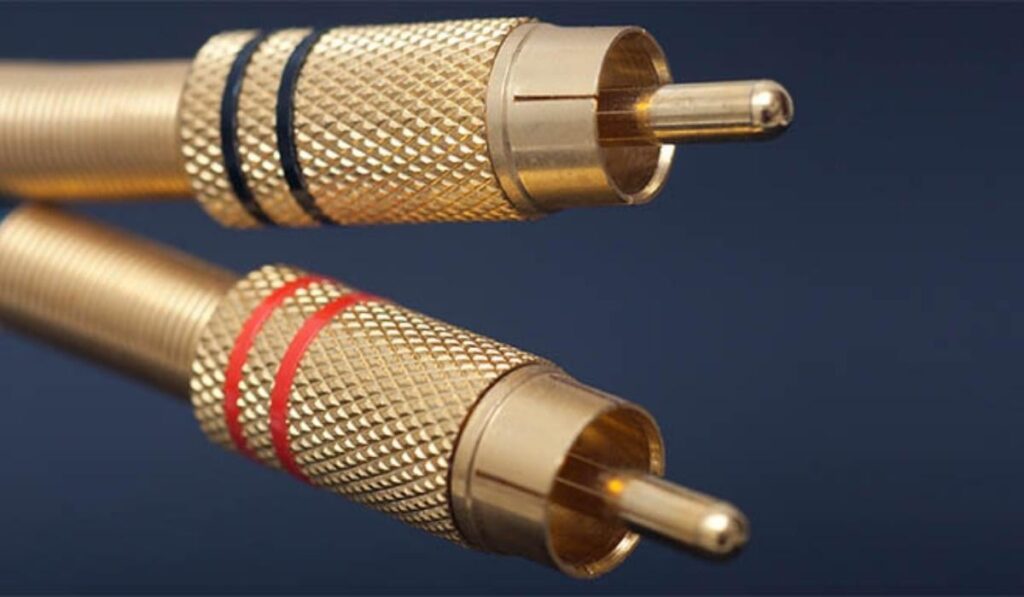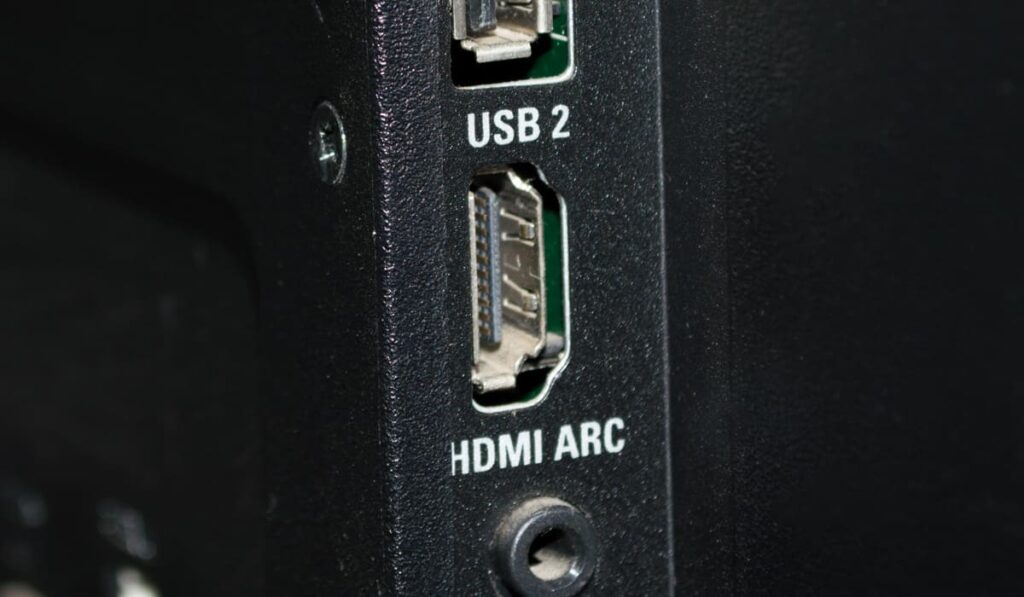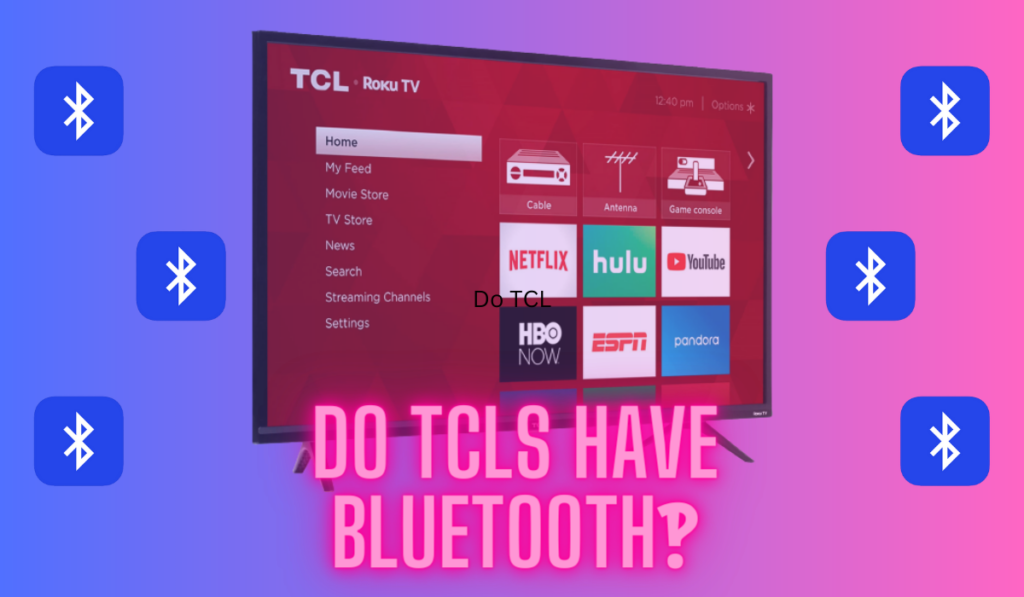Wireless headphones and mobile devices are incredibly user-friendly due to their portability and convenience, as well as their lack of cables and wires which can often be a nuisance. If you do want to connect your devices to your TV, you just have to make sure your television has Bluetooth capability. Not all do, but there are ways you can add Bluetooth to any TV.
To add Bluetooth to your TV:
- Check if your TV has Bluetooth compatibility.
- Look at the audio outports on the TV.
- Connect a Bluetooth transmitter to an audio output port on the TV.
- After making sure the Bluetooth transmitter has power, put the transmitter and the receiver into pairing mode.
The steps to add Bluetooth connectivity to your TV are simple, but sometimes it helps to have a little more information. Assuming your TV doesn't already have a Bluetooth option, the most important piece of equipment you need is a Bluetooth transmitter, which is in most cases inexpensive on Amazon.
Key Takeaways
- Adding Bluetooth to Any TV: Connect the Bluetooth transmitter to the TV's audio port, ensure it has power and is in pairing mode, and pair the TV in the source menu for Bluetooth functionality.
- Limitations: Common issues with a Bluetooth transmitter on a TV include poor sound quality, audio interruptions from interference, and potential lip-sync or delay problems.
- Recommended Bluetooth Transmitters: Bluetooth transmitters like the 1Mii B03Pro+ or the Avantree Oasis Plus (both on Amazon) provide reliable, low-latency audio transmission and versatile connectivity for TVs.
How to Check If Your TV Has Bluetooth

First, you'll want to check to see if your smart TV came with a smart remote control because if it did, the television supports Bluetooth. If you don’t have a smart remote or aren’t sure if it is, you can still check by going to the TV’s settings menu. In settings, you want to select ‘Sound’ and then ‘Sound Output’. You'll know your TV is Bluetooth compatible if you see an option for ‘Bluetooth Speaker List.'
If you have problems accessing the settings menu, you can also check your user manual. And a quick note, if you're looking for TV-specific instructions, check out our articles on Bluetooth on LG, Vizio, Hisense, TCL, and Roku TVs.
Check the Audio Output Ports on the TV

It's important to pay attention to the TV's audio options because there are different types of connections. For instance, you need to know if there is an optical audio connection, RCA, or an auxiliary output so you have a better idea of what kind of Bluetooth transmitter to buy. Thankfully, there are universal transmitters like the Glovery Bluetooth (on Amazon) which cover RCA, optical audio connection, as well as auxiliary.
RCA

To find out where the RCA outputs are, you have to look at the back of your TV. It's not uncommon for the RCA analog outputs to be on the bottom of the TV or the sides.
They're typically color-coded red and white, so it's easy to set up the cables properly without making any mistakes during the process. If you see the label, ‘Output,' this means it's meant for sending audio to another device.
Optical Audio Connection

Optical audio connection – also known as TOSLINK connections – is a popular way of sending high-quality audio from one device to another. If your TV has the port for it, you'll see a single port on the back or side of your TV along with the label underneath that says, ‘Optical.'
Auxiliary (AUX)
Auxiliary or AUX is probably one of the most popular audio ports out there. Again, it's commonly located on the back or side of the TV and will be labeled AUX Out or AUX Output. You can convert an RCA to AUX and vice versa.
Steps for Adding Bluetooth to a TV
As mentioned, adding Bluetooth functionality to your TV is fairly simple. These are instructions for outputting audio from the TV through Bluetooth technology to a Bluetooth-compatible speaker, headphones, etc.
Connect a Bluetooth Transmitter to an Audio Output Port
A Bluetooth transmitter is a small device that creates Bluetooth capability for almost any TV as long as it has an audio output port. While we focus on home theater tech on this website, you can have a look at this guide to understand Bluetooth Transmitters/Receivers and how to approach them.
The type of port you have access to will determine the kind of transmitter you need, but either way, connecting the Bluetooth transmitter is easy. All you have to do is connect the transmitter to the corresponding port.
Make Sure the Bluetooth Transmitter Has Power
Unless the Bluetooth transmitter is battery-powered, you’ll need to plug it into a power source with a USB. Most Bluetooth transmitters employ a small indicator light that tells you whether it's turned on or not after having plugged it in.
If the transmitter is battery-powered, the indicator light should also warn you when the battery is running low.
Put the Bluetooth Transmitter into Pairing Mode
Bluetooth transmitters have varying steps for pairing mode, so carefully follow the provided instructions. In general, activating them is easy by pressing the power button for a few seconds until the indicator light flashes blue and red.
Once it's in pairing mode, you don't have to worry about placement because it's already connected to the TV. Pairing Bluetooth devices is usually the easiest part of the process, however, if you need more examples of how to pair devices, we have a guide on pairing Bluetooth speakers with the Amazon Fire Stick.
Put the Receiving Device into Pairing Mode
To put your TV into pairing mode so you can add Bluetooth, the first step is to go into the source menu. From there, you’ll select the ‘Connection Guide’ which will take you through the audio setup steps.
Press the speaker option on the menu, and you should see a tab for Bluetooth. Once the TV is in pairing mode, check under “Available Outputs.' Read your owner's manual if your television's menu options aren't clear.
The Bluetooth Transmitter and Receiving Device Should Be Paired
If you followed the simple setup steps you should have added Bluetooth to your TV. Now you can use a smartphone as a remote control, connect headphones, and stream content from your mobile devices.
Even though the setup is fairly straightforward, there can be problems sometimes that you'll need to troubleshoot.
Common Issues with Using a Bluetooth Transmitter from a TV
There are certainly advantages to using a Bluetooth transmitter, including the fact you won't need any more cables or wires for your entertainment system.
Some problems, like intermittent audio and lip-sync or audio delay, may be manageable, while others could lead to the desire to disconnect and forget about them entirely.
Pro Tip: If you're experiencing quality issues, and the Bluetooth receiver you've added is near your Wireless Router, you may have your Wi-Fi network interfering with your Bluetooth signals.
Again, while we focus more on the home theater aspect of these situations on this blog, if you're having any of the issues below and suspect it could be from this Wi-Fi interference type of problem, have a look at this guide on how to manage that interference.
Poor Sound Quality
Adding Bluetooth capability to your TV can sometimes result in poor sound quality. For instance, it's not uncommon for certain television channels to sound better without Bluetooth being turned on.
In order to improve the sound again, you can disconnect the transmitter, but then you'll have to go through the pairing process once it's been reconnected.
Audio Cutting In and Out
There can also be problems with interference which tend to cause the audio to cut in and out. A quick fix to this problem is to shorten the connecting wire, but if the TV and power source aren't close to each other, this may not be an option.
Lip Sync or Audio Delay
Generally, audio delay and lip-sync issues can be caused by a few things, including having too many devices connected at once, as most Bluetooth transmitters can only support a few devices at a time. So, if two sets of headphones are connected at the same time, one might be receiving the audio signal before the other.
Alternatively, if these solutions don't work, some of the fixes included in this article on the lag between soundbars and TVs might help as well.
Best Bluetooth Transmitters for TVs
Here are some of the best Bluetooth transmitters to consider for enhancing your audio experience with TVs. There are a few options, from high-quality to budget-friendly solutions, ensuring seamless connectivity for all preferences.
1Mii B03Pro+ Bluetooth Transmitter
The 1Mii B03Pro+ Bluetooth Transmitter (on Amazon) is a versatile device that delivers high-quality audio with minimal lag. Its dual antennas provide an extended transmission range, making it suitable for various audio setups, such as TVs and home entertainment systems. While it is a bit pricier, it ensures good quality for those seeking a reliable audio transmission solution.
Avantree Oasis Plus
The Avantree Oasis Plus (on Amazon) is also a versatile Bluetooth transmitter that supports aptX HD and features dual-link connectivity, allowing two headphones to connect simultaneously.
Related Questions
How to Add Bluetooth To an Android TV?
Most modern Android TVs typically include built-in Bluetooth, but the availability can vary between models. If your Android TV doesn't have Bluetooth, you can make add it by following the same steps as you would for other TVs. This lets you connect wireless audio devices like headphones or soundbars effortlessly.
How To Connect Bluetooth Headphones/Speakers to TV?
If you already have a Bluetooth TV (a TV with Bluetooth built-in), you can easily connect your wireless headphones by turning on both devices and initiating a pairing process.
If you are using a Bluetooth transmitter for a TV, after connecting it, enable Bluetooth on your headphones and pair them with the transmitter. Next, in your TV audio settings, select the Bluetooth transmitter from the list of available devices. Check out this guide if you need more details.





